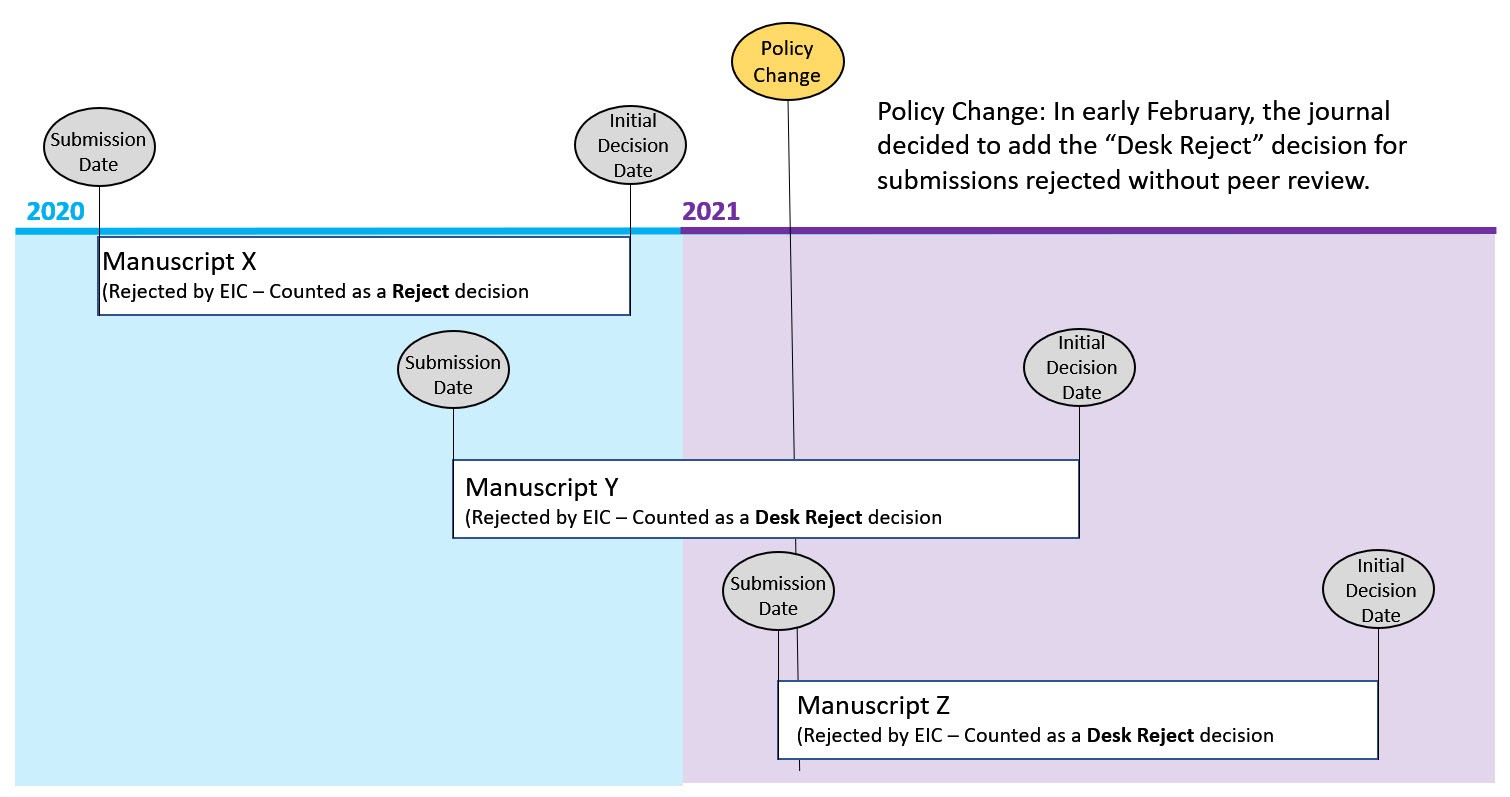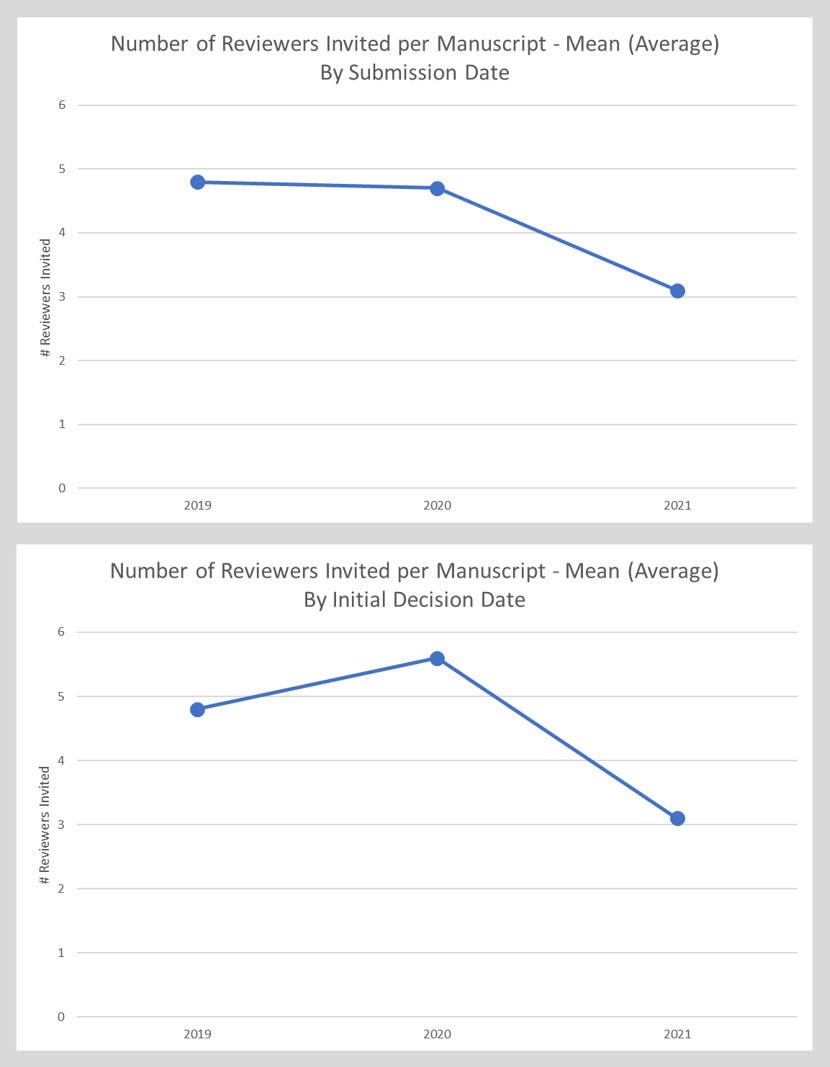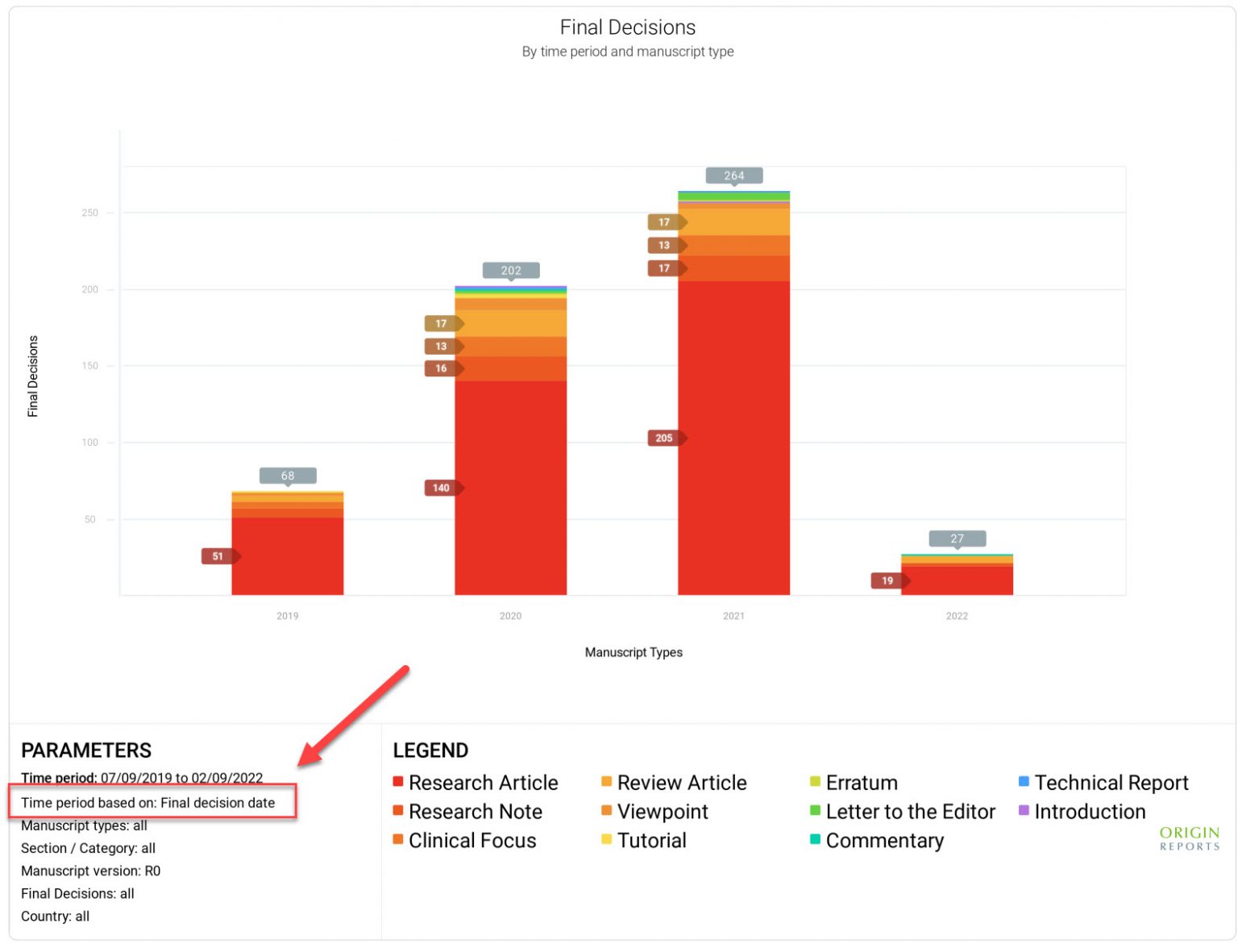First posted on the ORIGINal Tips Blog
By: Sherrie Hill and Kristen Overstreet
Fast Facts:
When you create charts to present your journal data, it is important to note which of the many possible dates you used. For example, when creating a chart to show initial decisions, are you using the submission date or the date of the initial decision as your reference date?
Does it really matter?
Actually, the reference date you select is very important because the date determines the way that you will group the submissions. If you were tasked with putting apples into groups and counting the apples in each group, you can easily see how different your counts would be depending on how you set up your groups. If you grouped the apples by color, you would get different counts than if you grouped them by apple variety or by size. The dates that we use to group our submission data works the same way. If we group all the manuscripts by submission date, we will get different counts than we would if we used different dates, such as initial decision date, final decision date, date the editor was assigned, or date the reviewer was invited. So, what reference date should you select when creating your charts? It really depends on what questions you are trying to answer. We will look at a variety of scenarios.
Submissions
When reporting the number of submissions received, you will want to use the submission date. However, you should be aware that for many manuscript handling systems, there are two submission dates available, a static (non-changing) original submission date and a dynamic original submission date, which might be updated. When an author submits their manuscript for the first time, the static and the dynamic submission dates are set to the same date value; however, the dynamic submission date will be updated if the submission is returned to the author for any reason and resubmitted prior to assigning it to an editor.
When this occurs, the dynamic original submission date will be updated to the date that the author re-submits the manuscript. Many editorial offices prefer to use the dynamic original submission date as the reference date for submissions charts, since the journal has no control over the length of time that the submission is with the author. In your manuscript handling system, the static submission date may be called: Submission Date – Original, First Receipt Date, etc. These systems use terms such as Submission Date or Initial Date Submitted for the dynamic submission date. In the example above, First Receipt Date is the static submission date and Initial Date Submitted is the dynamic submission date.











